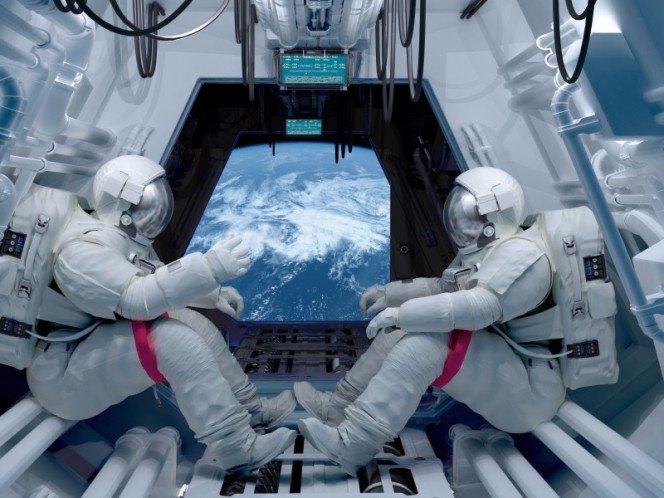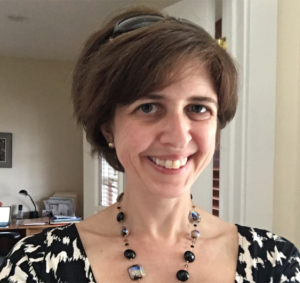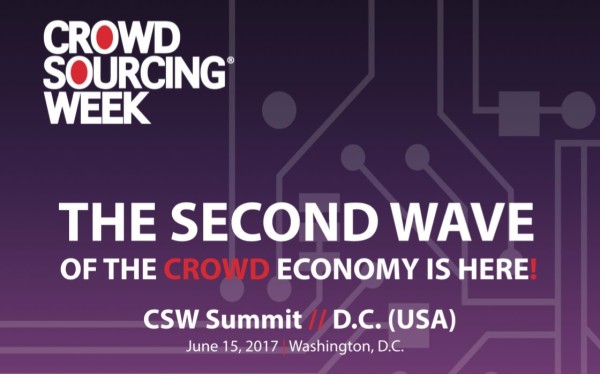Can open innovation stimulate critical improvements and breakthroughs that will provide direct benefits to the world?
In recent years, many organizations, from small startups to the most well known global organisations, have turned to open innovation to solve their toughest problems and address their R&D needs.
The National Aeronautics and Space Administration (NASA) is one of the organisations leading the way with this crowdsourced innovation, turning to the public for out-of-the-box thinking about human space research and exploration challenges. In the below Q&A, NASA’s Program Executive for Prizes & Challenges Amy Kaminski discusses the opportunities and challenges of using crowdsourcing to help find solutions to tough research problems and accelerate innovation within the space agency.
Amy and her team work to develop strategies to expand the space agency’s use of a variety of open innovation methods, involving citizens as contributors to the agency’s research activities through challenges, competitions and crowdsourcing. By tapping into the power of the crowd as contributors, the team creates innovative, efficient and optimal solutions for specific, real-world challenges that are faced by NASA researchers.
Q&A with Amy Kaminski, Program Executive For Prizes & Challenges at NASA
Q: Where did the idea to begin crowdsourcing come from, from the top of NASA, or several rungs down? If it started somewhere other than at top level was there any resistance, perhaps linked to feelings of somehow losing an element of control?
Amy: Crowdsourcing has become a tool for innovation at NASA in an organic fashion. No single office, organisation or individual at NASA can claim to have started its use within the space agency. We are made up of a headquarters in Washington, D.C. and nine field centres around the country, conducting science and engineering work across disciplines ranging from aeronautics to astronomy. NASA program managers and public outreach specialists as well as NASA-funded researchers across these locations and fields of interest have independently “discovered” crowdsourcing – including citizen science, challenges and prize competitions – to address their R&D and outreach needs.
The greatest challenge the use of crowdsourcing methods at NASA has endured is in their relative newness and lack of familiarity within most of the agency. Scientists and engineers at NASA are used to particular ways of doing R&D, and this usually entails doing work within the agency or having it done by groups within academia or industry via grants, contracts, and cooperative agreements. Crowdsourcing involves opening up the R&D participant base, which introduces uncertainty even while opening new and exciting possibilities for finding solutions to problems of interest and accelerating research work. So, it takes some discussion and sharing of success stories to convince people within NASA why they should take a chance and spend some of their precious, limited resources trying a new way to meet their goals.
Q: It’s not uncommon for people in large organisations to feel that commanding large budgets is a status symbol. Given the challenges/competitions can result in solutions that cost a fraction of what they might previously have done, did/do some people feel the process a threat as it reduces their perceived importance?
Amy: I haven’t ever heard of this being an issue at NASA. R&D resources within NASA are limited and closely monitored by program managers to ensure they are spent wisely. Achieving goals as efficiently as possible is looked upon favourably! Several NASA citizen science projects and prize competitions have demonstrated the value of crowdsourcing to meet this end.
Q: How important/valuable is it that the competition process appears to produce solutions that are not only cheaper but also faster than would have been previously expected?
Amy: The importance of cost savings and speed of arriving at a solution or research achievement depends on the desires of the crowdsourcing project owner. In some ideation challenges, solutions are solicited for technology concepts that will then take years until they are ultimately implemented. The goal of some citizen science projects is to extend or expand a researcher’s “team” to speed up the ability to analyse huge volumes of data.
Q: Three of the finalists in the current Space Robotics Challenge are non-US, from Japan, Spain and Canada. Are the state security agencies and other stakeholders okay with NASA projects potentially being awarded to non-US entrants?
Amy: Non-US citizens are permitted to participate and be recognised as winners but are not eligible to receive any cash awards from NASA. In order to be eligible to win a NASA prize, a team must be comprised of at least 51% citizens or permanent residents of the US, and any individual entities participating must be incorporated in and maintain a primary place of business in the US.
Leading crowdsourcing practitioners such as Amy Kaminski will be meeting discussing the future of open innovation at the next Crowdsourcing Week Summit D.C. in Washington, 15th June 2017. Both US and international professionals from major global organisations including Facebook, NASA, GE and the US Department of Defense, and many more will also share how crowdsourcing is shaping their industries and is transforming organisations today.
Don’t miss out on this unique chance to connect with enterprise leaders and disruptive innovators who understand the fundamental shift towards the new crowd economy.
For more event details and ticket registration, visit: http://crowdsourcingweek.com/csw-summit-dc/
We hope to see you there.



